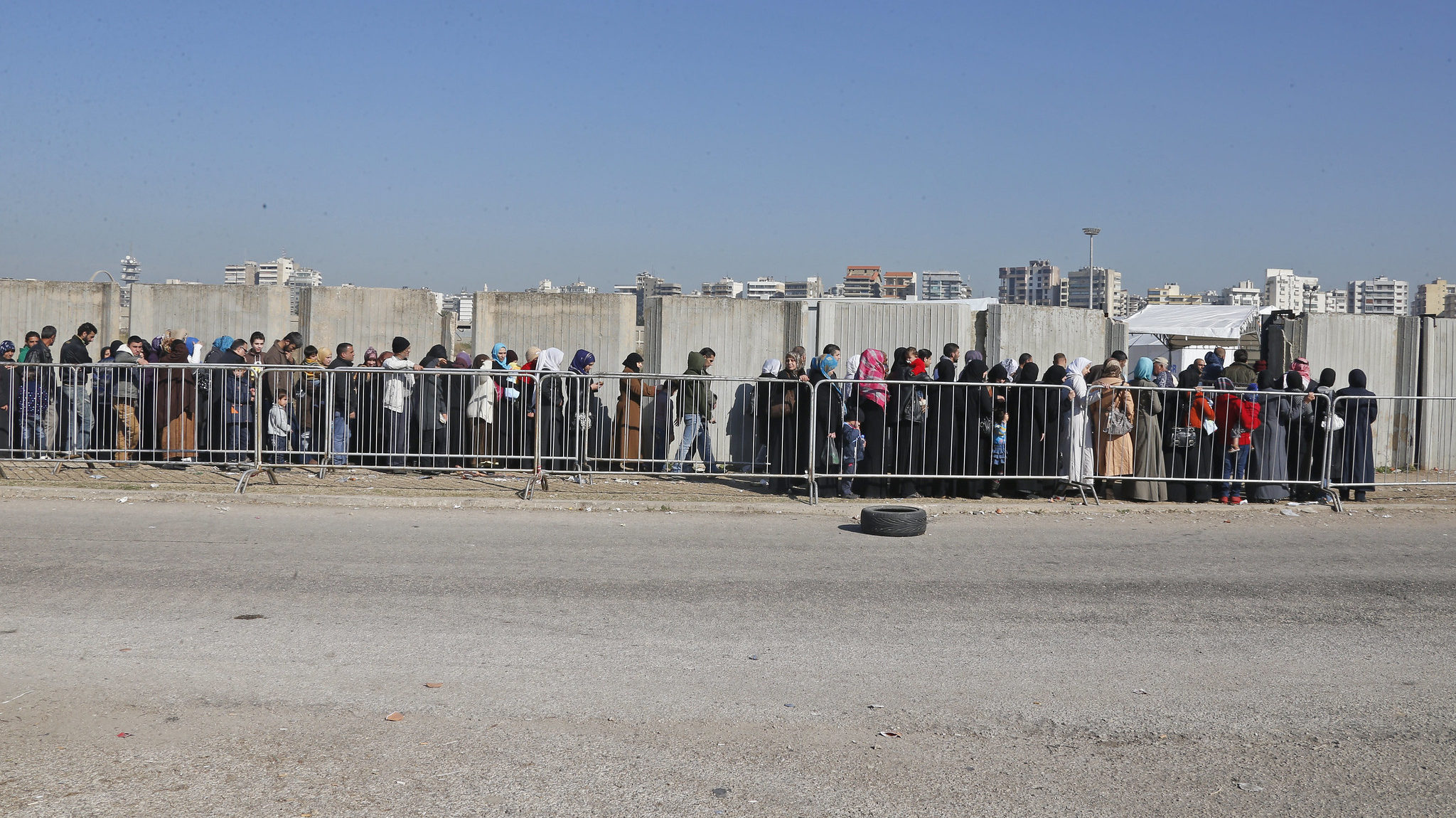Political Instability, Water Scarcity in MENA Could Increase Migration in 2023
Ahead of International Migrants Day: The Middle East and North Africa play a complex role in international forced migration as the migrants’ origin, host countries, and transit routes
The Middle East and North Africa are two of the regions where migration is part of the daily discussion. Looking ahead to 2023, the region faces several complex internal and global challenges that could boost forced migration.
From the migrants’ countries of origin, to host countries, to transit routes for migrants from other regions, the MENA region is involved in high migration figures which are expected to rise in 2023. These are just a few of the issues that will be highlighted when the world marks International Migrants Day on Sunday.
“Considering the different challenges in the region, from energy and food insecurity to climate change and water scarcity, as well as political instability, probably the migration flows will increase next year,” according to Maria Grazia Stefanelli, an expert in international relations specializing in MENA politics and geopolitics, and a researcher and geopolitical analyst for the Middle East region at the Observatory on the Mediterranean at Istituto di Studi Politici S. Pio V in Rome.
According to the United Nations International Organization for Migration, a migrant is “a person who moves away from his or her place of usual residence, whether within a country or across an international border, temporarily or permanently, and for a variety of reasons.” However, there is no global consensus on the definition of a migrant.
The main factors that cause the forced migration originating in the region are related to conflicts, violence and violation of human rights as well as political, economic and social instability, Stefanelli told The Media Line.
Climate change also is a factor, since it causes human insecurity and can therefore foster migration due to its negative impact on economic and demographic growth. It also exacerbates regional tensions, making the area’s residents feel more vulnerable and fragile.
Stefanelli adds that the Russo-Ukrainian war has been a factor in migration in 2022 in the MENA region since it has boosted global food and energy insecurity.
Roberto Forin, deputy director at the Mixed Migration Centre, told The Media Line that the region’s economic situation has been most affected in 2022 by a combination of the aftermath of the crisis of COVID-19, and soaring prices for essential products due to the impact of the conflict in Ukraine, which increases forced migration.
One of the most severe refugee situations in the region, says Forin, is Syria, which is the country of origin for over 5.6 million current refugees. The vast majority of them remain in the region.
According to a 2022 report by the Mixed Migration Centre, almost 3.7 million Syrian refugees are currently living in Turkey, around 1 million in Lebanon and over 600,000 in Jordan. In Europe, there is a significant presence of Syrian refugees in Germany and Sweden.
This holiday season, give to:
Truth and understanding
The Media Line's intrepid correspondents are in Israel, Gaza, Lebanon, Syria and Pakistan providing first-person reporting.
They all said they cover it.
We see it.
We report with just one agenda: the truth.


Lebanon is one of the countries with the most dramatic jumps in migration this year in the region due to its current economic crisis, which is made worse by regional and global conflicts. “It is estimated that in 2022 compared to 2021, there has been an increase of 350% in movement out of the country by Lebanese,” Forin noted.
Due to the situation there, people who are not of Lebanese origin currently living in the country are migrating for the second time. Forin explains it is often the case that when there is a crisis in a country there is an increase in xenophobia. “So, we see quite a lot of movement of Syrians and Palestinians out of Lebanon,” he said.
Yemen also remains one of the most severe global humanitarian crises due to its ongoing civil war. Forin says that the migration patterns of Yemenis are different.
“We know that Yemenis are so disempowered that they really struggle to move very far from Yemen, as opposed to other groups,” he said, adding that most Yemenis are either trapped in the country or are moving to Saudi Arabia, though it has an active and organized method to deport Yemenis back to their home country.
Afghanistan is one of the most worrying cases when it comes to displacement and potential migratory flows, according to Florin. He says that “since the Taliban takeover in August 2021, the country’s economy is in a freefall,” which creates a huge problem in the country in terms of access to necessities.
“Twenty million people in Afghanistan are projected to be acutely food insecure between now and March 2023,” he noted. In addition, he adds that the taking away of women’s rights and the security situation may also be causes of migration.
However, Florin notes that many Afghans are trapped in the country and those that manage to leave very often don’t make it much further than neighboring countries such as Pakistan and Iran, which are “not necessarily countries where they can find protection,” he said.
Forin says that Tunisia and Egypt are becoming major countries of origin for migrants’ irregular movement toward Europe.
“They are the two biggest groups of arrivals in 2022. They constitute up to 40% of the approximately 100,000 people that arrived in Europe,” he said, adding that from the European perspective, despite being numerically insignificant when compared with the number of people hosted in MENA countries, irregular arrivals are very much an issue at the political level, making these two North African countries a focal point for Europe.
In addition to MENA being a region of origin for forced migration, it is also an important player concerning transit for migrants coming from other regions and heading to different places.
Tobias Borck, a research fellow for Middle East Security Studies at the Royal United Services Institute, told The Media Line that in the MENA region there are three main routes of transit for migrants into Europe.
He says that the eastern route goes through Syria and then into Turkey, and later into Europe. The central route is through Libya and to Italy and increasingly Greece by sea, and the western route goes through Morocco into Spain, he explains.
“Morocco and Libya can be considered as the main destination countries of sub-Saharan migrants, who have the intention to cross the Mediterranean Sea and reach European countries,” Stefanelli added.
Focusing on this migration route, she says that Italy, Spain, Malta and Greece are the main European migration hubs.
Forin adds that an additional transit route for migrants in the MENA region is through Yemen. He says that it is a transit country for refugees and migrants from East Africa heading toward the Gulf countries.

